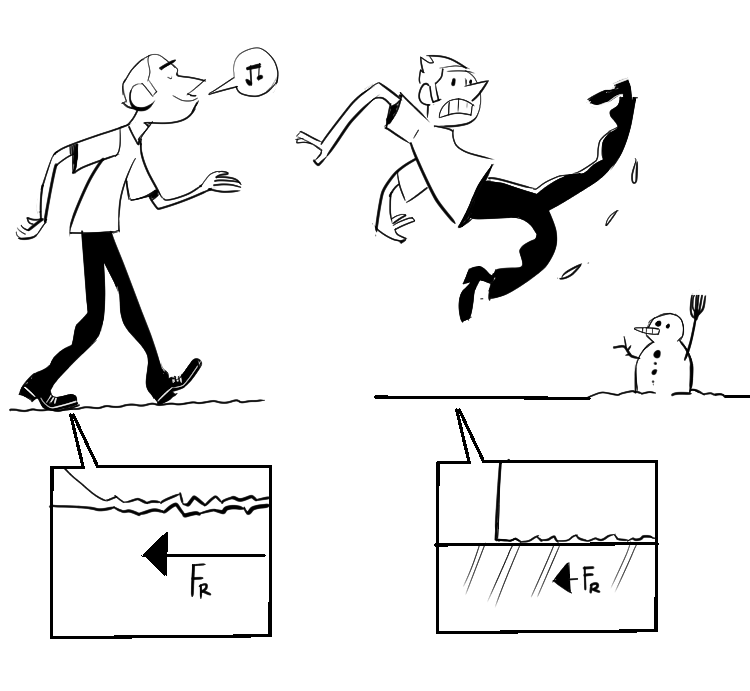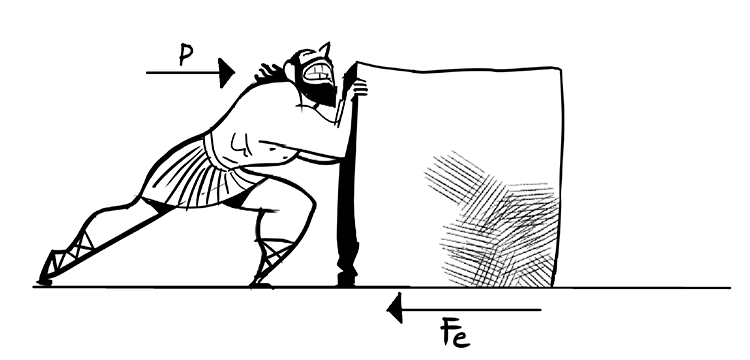The Invisible Force
Friction is a sneaky little force that slows down the movement of one thing sliding across another. Imagine it as an invisible anchor that says, “Easy there, let’s not rush!” When you slide a toy car across the floor, it eventually stops as if an unseen force put on the brakes. That’s friction, acting like a gentle traffic controller.
But here’s the fun part: without friction, life would be like trying to walk on a polished ice floor. We wouldn’t be able to walk without slipping, drive without skidding, or even hold onto our ice cream cones without them slipping from our hands.

How Does Friction Work?
You might find it hard to believe, but no surface is perfectly smooth. Even if something feels as smooth as a scoop of vanilla ice cream, under a microscope, you’d see tiny bumps and valleys. When two surfaces touch, these little bumps get tangled up with each other, creating resistance – that’s friction!
The strength of friction depends on a couple of things:
- The types of materials: Some materials naturally have more friction. For example, rubber creates more friction than silk.
- The force pushing the surfaces together: The harder two surfaces are pushed together, the more those tiny bumps get in each other’s way, increasing friction.

Different Types of Friction
Friction has many forms, just like your favorite ice cream.
- Static Friction: This is the friction that stops an object from starting to move. It’s like when you try to push a heavy sofa, you need to overcome static friction before making it move.
- Sliding Friction: Once the sofa starts moving, sliding friction comes into play. It’s usually less than static friction, which makes it easier to keep an object moving once you’ve got it started.
- Rolling Friction: This type of friction happens when an object rolls over a surface—like a basketball bouncing on the court.
- Fluid Friction: This is the resistance an object experiences when moving through a liquid or gas, like when you’re swimming in a pool or flying a kite in the wind.
Why is Friction Important?
Friction may slow us down, but it’s also very helpful in many ways. Here are some examples:
- Transportation: Friction between the tires and the road allows cars to move without spinning out, and the friction between the brake pads and the wheel helps them stop safely.
- Sports: In soccer, players use the friction between their shoes and the ball to control it. In rock climbing, climbers rely on the friction between their hands, feet, and the rock to stay secure.
- Writing: The friction between the pencil’s tip and the paper is what allows us to write. Without it, the pencil would just slide across the page.
- Walking: We can walk because of the friction between our shoes and the ground.
Friction can be both a friend and a foe. On one hand, it’s essential for many of our everyday activities. On the other hand, it can cause problems like wearing out machinery and car tires, or causing heat in engines leading to energy loss.
That’s why scientists and engineers are always looking for ways to control friction—increasing it where we need more grip (like the soles of our shoes) and reducing it where we want things to run smoothly (like in engine parts).
The next time you stop your bike without skidding, or when you pick up a toy and it doesn’t slip out of your hand, remember there’s a secret helper at work—friction! It’s like an invisible superhero in our world, making things like riding bikes or playing a simple game of catch possible. So, let’s give a big cheer for our unsung hero, friction!
